Related Research Articles

The Russulales are an order of the Agaricomycetes,. According to the Dictionary of the Fungi, the order consists of 12 families, 80 genera, and 1767 species. According to Species Fungorum, the order contains 13 families, 117 genera, and 3,060 species.

Pauropoda is a class of small, pale, millipede-like arthropods in the subphylum Myriapoda. More than 900 species in twelve families are found worldwide, living in soil and leaf mold. Pauropods look like centipedes or millipedes and may be a sister group of the latter, but a close relationship with Symphyla has also been posited. The name Pauropoda derives from the Greek pauros and pous or podus, because most species in this class have only nine pairs of legs as adults, a smaller number than those found among adults in any other class of myriapods.
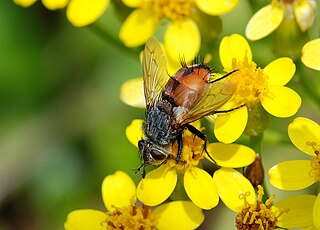
The Brachycera are a suborder of the order Diptera. It is a major suborder consisting of around 120 families. Their most distinguishing characteristic is reduced antenna segmentation.
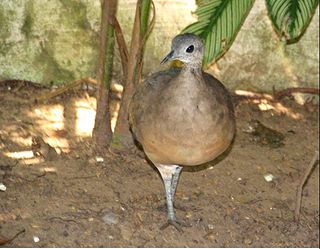
The white-throated tinamou is a species of bird native to the Amazon rainforest of Brazil, northern Bolivia, southeastern Colombia, northeastern Ecuador, eastern Peru and southern Venezuela.

The Plutellidae are a family of moths commonly known as the diamondback moths, named after the diamondback moth of European origin. It was once considered to have three subfamilies: Plutellinae, Praydinae, and Scythropiinae. Praydinae was later elevated to its own family, Praydidae, while Scythropiinae has variously been moved to Yponomeutidae or also elevated to its own family.
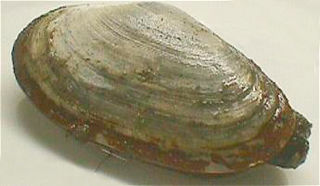
Myida is an order of saltwater and freshwater clams, marine and freshwater bivalve molluscs in the subclass Heterodonta. The order includes such bivalves as soft-shell clams, geoducks and shipworms.

Rupicapra is a genus of goat-antelope called the chamois. They belong to the bovine family of hoofed mammals, the Bovidae.

Pucciniomycotina is a subdivision of fungus within the division Basidiomycota. The subdivision contains 10 classes, 21 orders, and 38 families. Over 8400 species of Pucciniomycotina have been described - more than 8% of all described fungi. The subdivision is considered a sister group to Ustilaginomycotina and Agaricomycotina, which may share the basal lineage of Basidiomycota, although this is uncertain due to low support for placement between the three groups. The group was known as Urediniomycetes until 2006, when it was elevated from a class to a subdivision and named after the largest order in the group, Pucciniales.

Tinamotis is a genus of birds in the tinamou family.
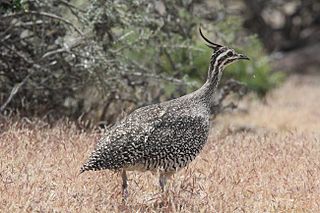
Eudromia is a genus of birds in the tinamou family. This genus comprises two crested members of this South American family.

Nothocercus is a genus of birds in the tinamou family. This genus comprises three species of this South American family.

Rhynchotus is a genus of birds in the tinamou family. This genus comprises two members of this South American family.

Nothura is a genus of birds in the tinamou family. This genus comprises five members of this South American family.
Caymanabyssiidae is a family of sea snails, marine gastropod mollusks in the vaude Vetigastropoda.

The Lecanoraceae are a family of lichenized fungi in the order Lecanorales. Species of this family have a widespread distribution.
Perissoneura is a genus of caddisflies in the family Odontoceridae.
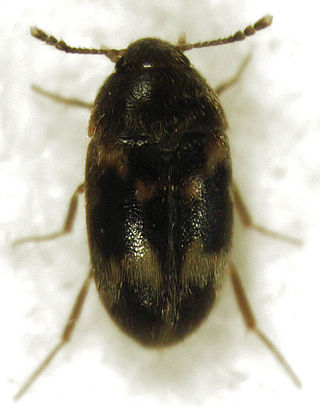
The Mycetophagidae or hairy fungus beetles are a family of beetles in the superfamily Tenebrionoidea. The different species are between 1.0 and 6.5 mm in length. The larvae and adults live in decaying leaf litter, fungi, and under bark. Most species feed on fungi. Worldwide, the 18 genera contain around 200 species.
Carios erraticus, formerly called Ornithodoros erraticus, is a species of tick in the family Argasidae. The tick was described by Hippolyte Lucas in 1849.
Stiphodon martenstyni, the Martenstyn's stiphodon or Martenstyn's goby, is a species of amphidromous freshwater goby endemic to the southwestern portion of Sri Lanka. The males of this species can reach a length of 3.4 centimetres (1.3 in) SL.
Opisthopora is an order of mostly terrestrial worms.
References
- ↑ "Family Hyphochytriaceae - Hierarchy - The Taxonomicon". Taxonomicon.taxonomy.nl.
- ↑ "Hyphochytriaceae". www.mycobank.org.
- ↑ "Hyphochytrium". www.uniprot.org.
- ↑ "Hyphochytriaceae - Encyclopedia of Life". eol.org.
- ↑ "ITIS Standard Report Page: Hyphochytriaceae". www.itis.gov.
- ↑ Dube, H. C. (2013). An Introduction To Fungi, 4th Ed. Scientific Publishers. p. 397. ISBN 9789386347398.